Connecticut R&D Tax Credit Case Study
The R&D tax credit is one of the most valuable credits leveraged by companies. The R&D credit yields billions of dollars in federal and state benefits to companies engaged in qualifying research. The R&D tax credit can provide a significant reduction to current and future tax liabilities and a source of cash.
Benefits
- Up to 13.5 cents of R&D tax credit for every qualified dollar
- Dollar-for-dollar reduction in your federal and state income tax liability
- Credit carried forward up to 20 years
Qualifications
More companies in Connecticut can now qualify for the R&D tax credit. Companies are able to qualify R&D activities beginning with the development of concepts and extend to the point where a product, process, formula, or other business component is ready to be commercially released. If you are engaged in any research activities, looking into a potential R&D tax credit may be a great benefit. In addition, look back studies can recognize unclaimed credits for the last 3 or 4 open tax years.
Case Study
A Stanford company designs and manufactures components for the aerospace industry. The company claims R&D credits each year for the development activities of its engineers. This project involved a multi-year study. The Company qualified for the federal R&D Tax Credit of $327,833 and an additional $184,000 of state R&D Tax Credit in Connecticut.
|
FEDERAL
|
CONNECTICUT
|
|||||
|
Year
|
Total QREs
|
Credit
|
Total QREs
|
Credit
|
||
|
2021
|
$1,300,000
|
$135,333
|
$1,300,000
|
$72,000
|
||
|
2020
|
$900,000
|
$91,000
|
$900,000
|
$52,000
|
||
|
2019
|
$650,000
|
$63,000
|
$650,000
|
$36,000
|
||
|
2018
|
$450,000
|
$38,500
|
$450,000
|
$24,000
|
||
| Total | $3,300,000 | $327,833 | $3,300,000 | $184,000 | ||
Learn about how to qualify for Connecticut's R&D tax credit state benefits.
Four-Part Test
Qualified research activities are defined by the four-part test outlined below
Technological in Nature
Activities must fundamentally rely on the principles of physical or biological science, engineering, or computer science.Permitted Purpose
Activities must be performed in an attempt to improve the functionality, performance, reliability, or quality of a new or existing business component.Eliminate Uncertainty
Activities intended to discover information that could eliminate technical uncertainty concerning the development or improvement of a product.Experimentation
All activities must include a process of experimentation including testing, modeling, simulating, and systematic trial and error.Research and Development Tax Insights
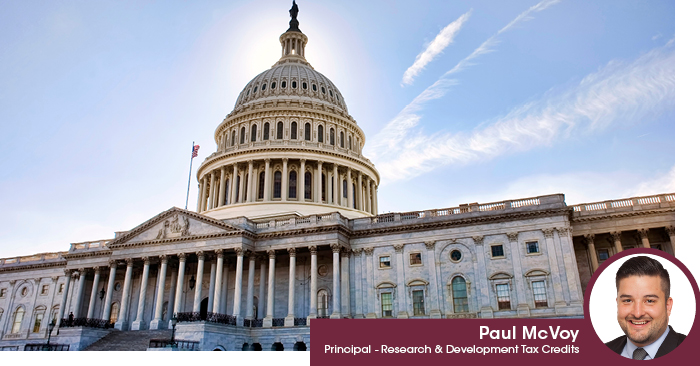
SALT Workaround Preserved, Real Estate & R&D Expensing Win Big. What Businesses Need to Know
06/30/2025Follow KBKG on Social Media Linkedin Facebook X-twitter Youtube By Paul McVoy | Principal, Research & Development Tax Credits The reconciliation process for the “One Big Beautiful Bill” (OBBB) has entered its final phase, and in the past three days, Senate Republicans cleared a key procedural hurdle and released updated text that could reach the Senate … Read More
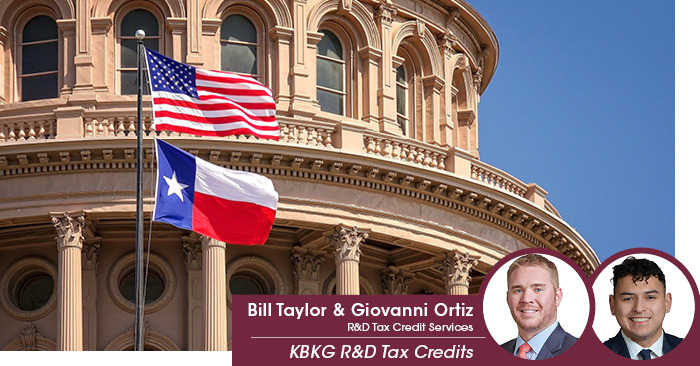
Texas Enhances R&D Credit, Allowing Companies to Claim More
06/27/2025By Bill Taylor and Giovanni Ortiz | Research & Development Tax Credits On June 1, 2025, Texas lawmakers passed Senate Bill 2206 legislation that significantly enhances the state’s R&D Tax Credit structure. The Governor signed this bill into law on June 17, 2025. Effective for franchise tax reports due on or after January 1, 2026, … Read More
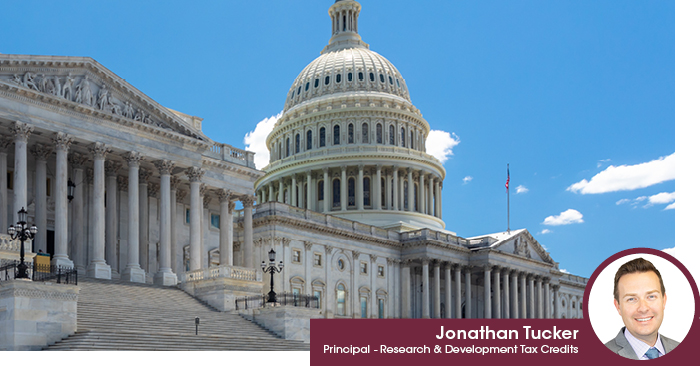
Retroactive and Permanent R&D Expensing Restored Under Proposed Senate Legislation
06/17/2025Follow KBKG on Social Media Linkedin Facebook X-twitter Youtube By Jonathan Tucker | Principal, Research & Development Tax Credits The Senate Finance Committee has proposed a significant change to the way U.S. businesses deduct their research and development (R&D) expenses. If passed, the bill would reverse a major change that took effect in 2022 based on … Read More
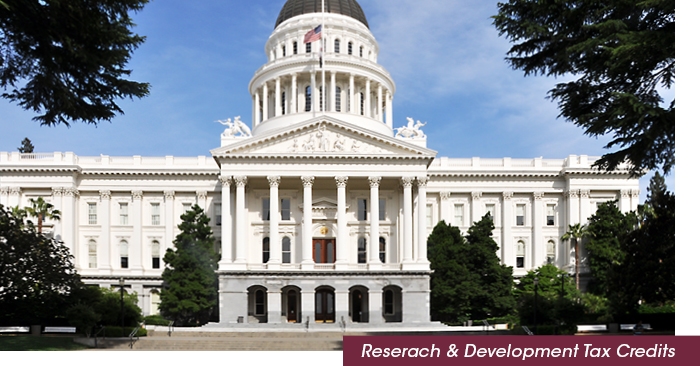
California Senate Bill 711 Proposes Simplified R&D Credit Method
06/10/2025Follow KBKG on Social Media Linkedin Facebook X-twitter Youtube By Tetyana Guguchkina, Elise Rhee, & Michael Maroney | Research & Development Tax Credits California is poised to overhaul its R&D Tax Credit with Senate Bill 711 (SB 711), which proposes replacing the state’s Alternative Incremental Research Credit (AIRC) with a new Alternative Simplified Credit (ASC) … Read More
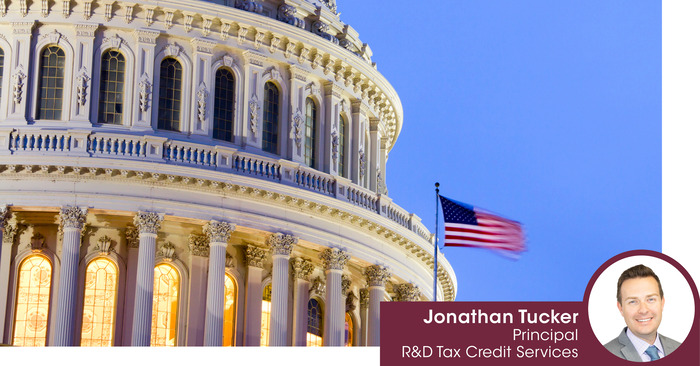
House Narrowly Passes Major GOP Tax Bill 215–214, Senate Signals Revisions Ahead
05/22/2025Follow KBKG on Social Media Linkedin Facebook X-twitter Youtube By Jonathan Tucker | Principal, Research & Development Tax Credits Just after midnight on Thursday, May 22, 2025, a full House debate on the multi-trillion-dollar tax bill began, and the House narrowly passed this sweeping tax and spending package dubbed the “One Big Beautiful Bill Act” with … Read More
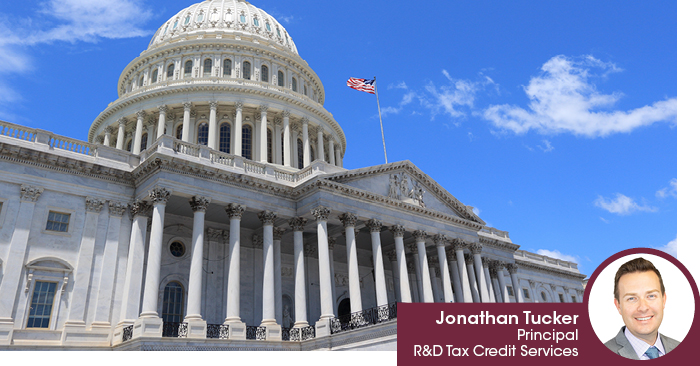
House Committee Advances Major GOP Tax Bill Amid Internal GOP Divisions
05/19/2025Follow KBKG on Social Media Linkedin Facebook X-twitter Youtube By Jonathan Tucker | Principal, Research & Development Tax Credits On May 18, 2025, the House Budget Committee narrowly approved a major tax and spending package dubbed the “One Big Beautiful Bill Act” with a 17-16 vote. Four Republicans voted “present,” highlighting growing tension within the party … Read More
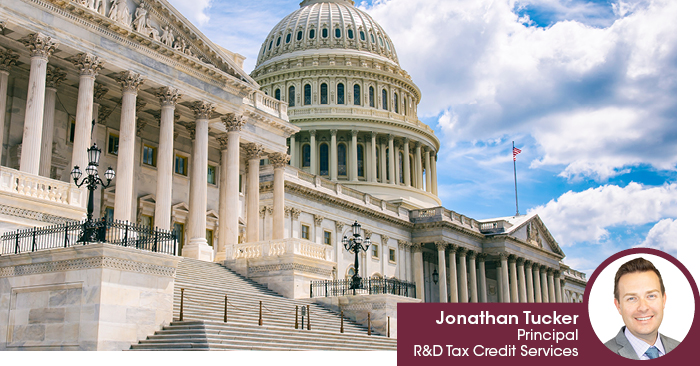
Senate Reacts to Key Provisions from House Tax Bill, Eyeing Permanent R&D Expensing
05/16/2025Follow KBKG on Social Media Linkedin Facebook X-twitter Youtube By Jonathan Tucker | Principal, Research & Development Tax Credits Important developments recently came out of Congress related to the House’s ongoing reconciliation efforts, specifically around tax provisions that impact businesses directly, most notably, research and development (R&D) expensing. At a recent Tax Council Policy Institute conference, … Read More
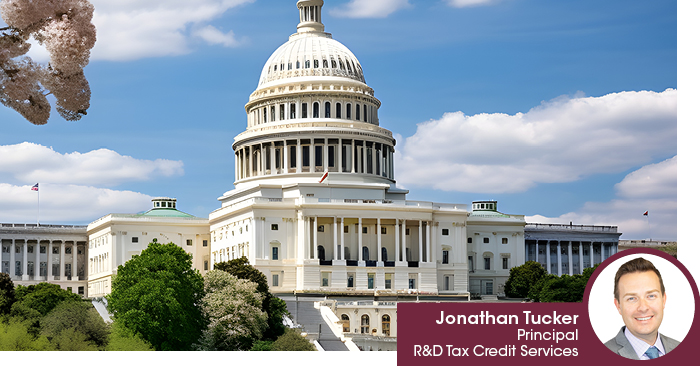
House Tax Bill Prioritizes 174 R&D Amortization Fix, Bonus Depreciation, SALT Cap, and more
05/13/2025Follow KBKG on Social Media Linkedin Facebook X-twitter Youtube By Jonathan Tucker | Principal, Research & Development Tax Credits On May 12, 2025, the House Ways and Means Committee released a larger text than what Chairman Jason Smith (R-MO) released on May 9 for proposed tax legislation as part of the FY 2025 budget reconciliation process. … Read More

The Case for Human Expertise in your R&D Tax Credits
04/29/2025In a world increasingly driven by automation, it’s tempting to turn to Artificial Intelligence (AI) powered solutions for complex tasks, even something as nuanced as claiming R&D tax credits. While AI can be a powerful tool, when it comes to maximizing your R&D tax credit claim, human expertise of a trusted advisor is not just … Read More
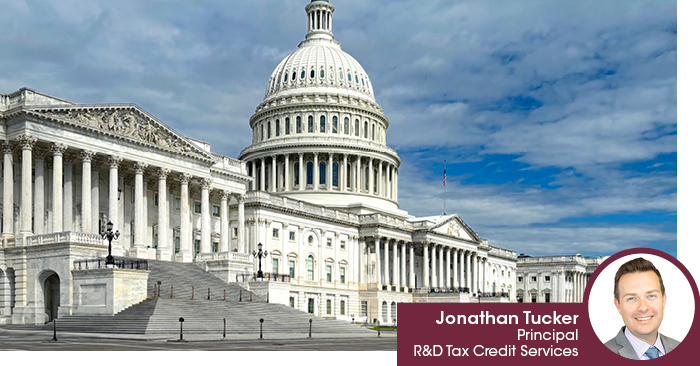
House Passes 2025 Budget Resolution, Paving Way for Tax and Spending Reform
04/10/2025Follow KBKG on Social Media Linkedin Facebook X-twitter Youtube By Jonathan Tucker | Principal, Research & Development Tax Credits On April 10, 2025, the U.S. House of Representatives approved the final version of the Fiscal Year (FY) 2025 budget resolution (H. Con. Res. 14) by a razor-thin margin of 216 to 214, which will incorporate amendments … Read More


